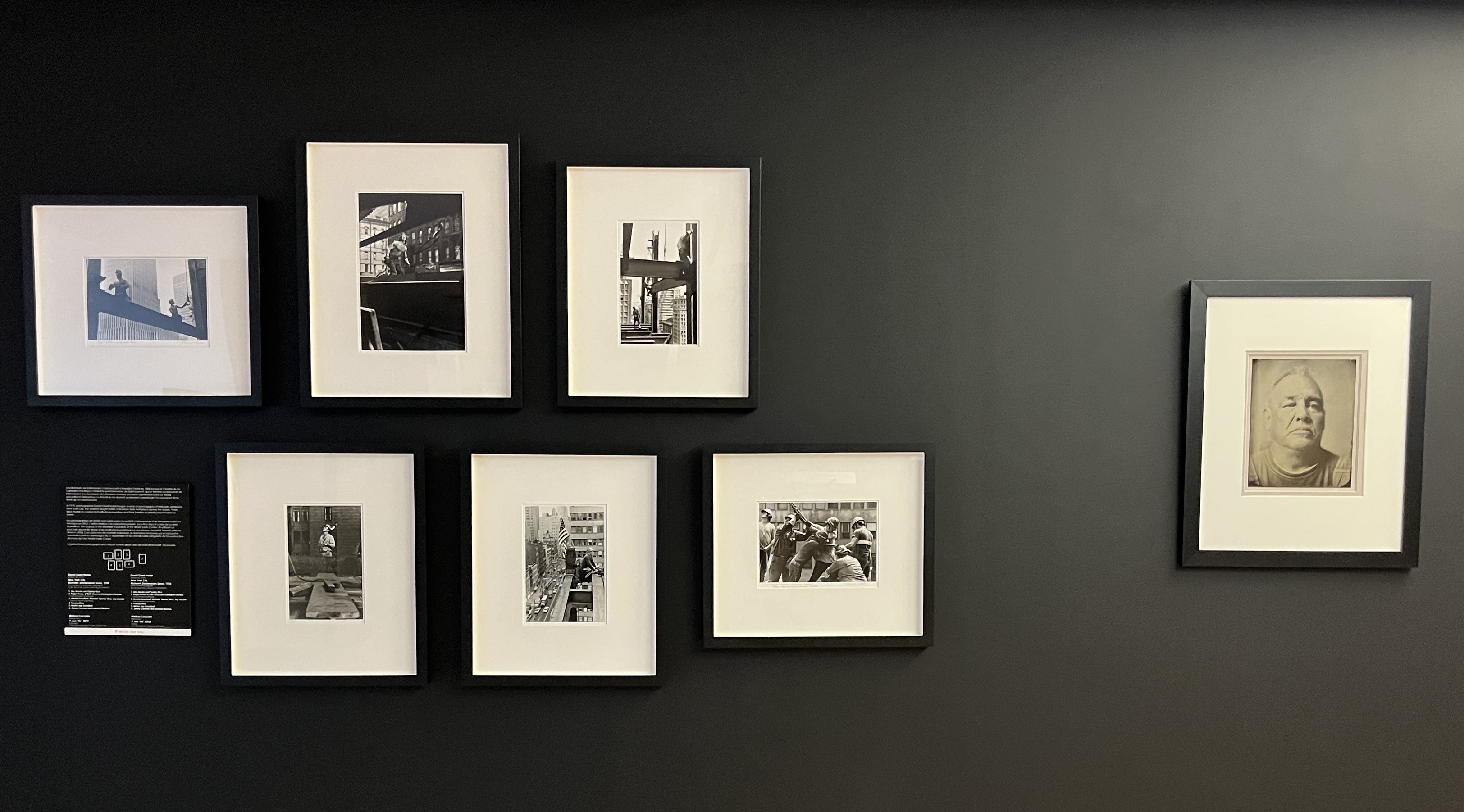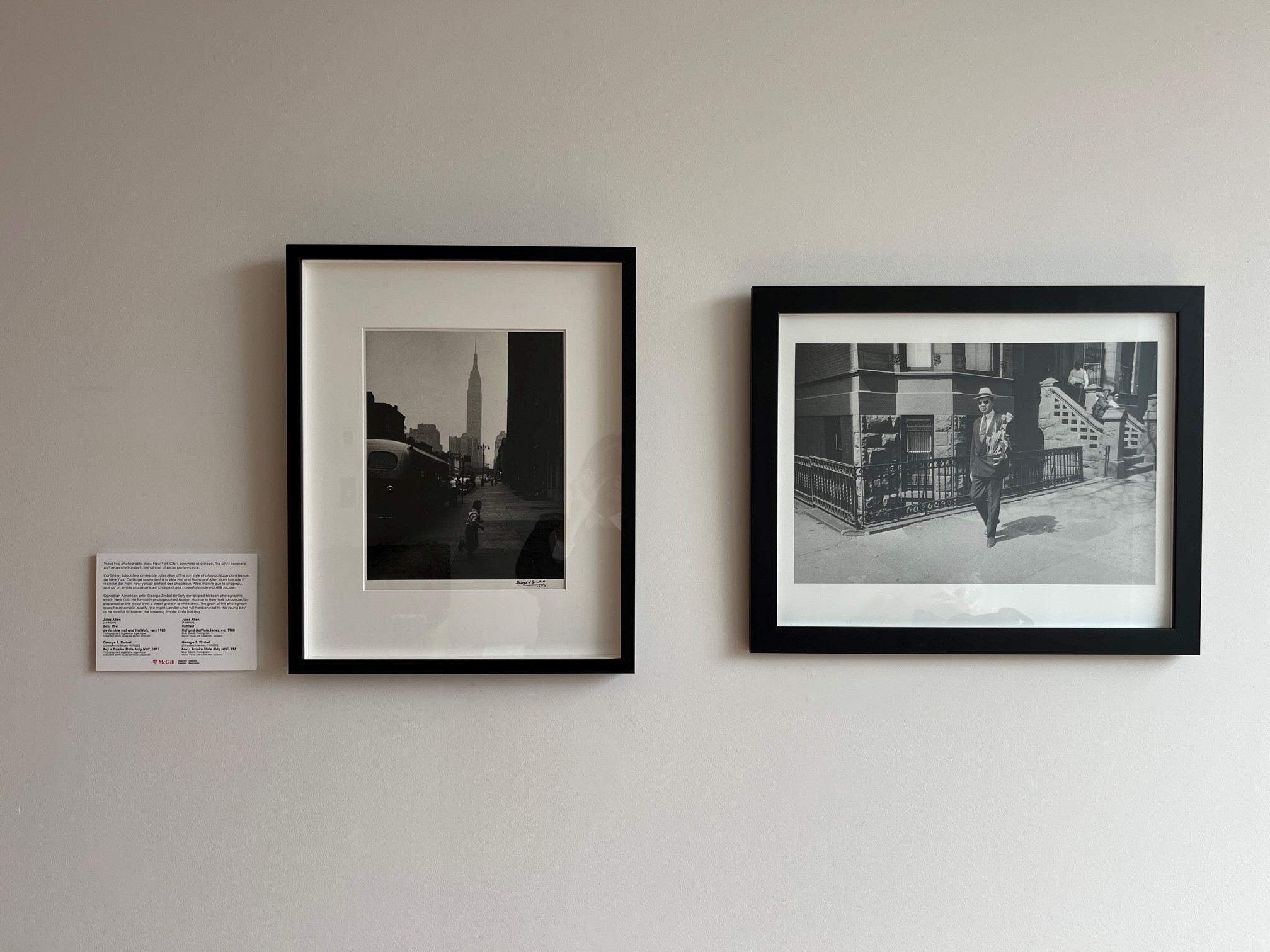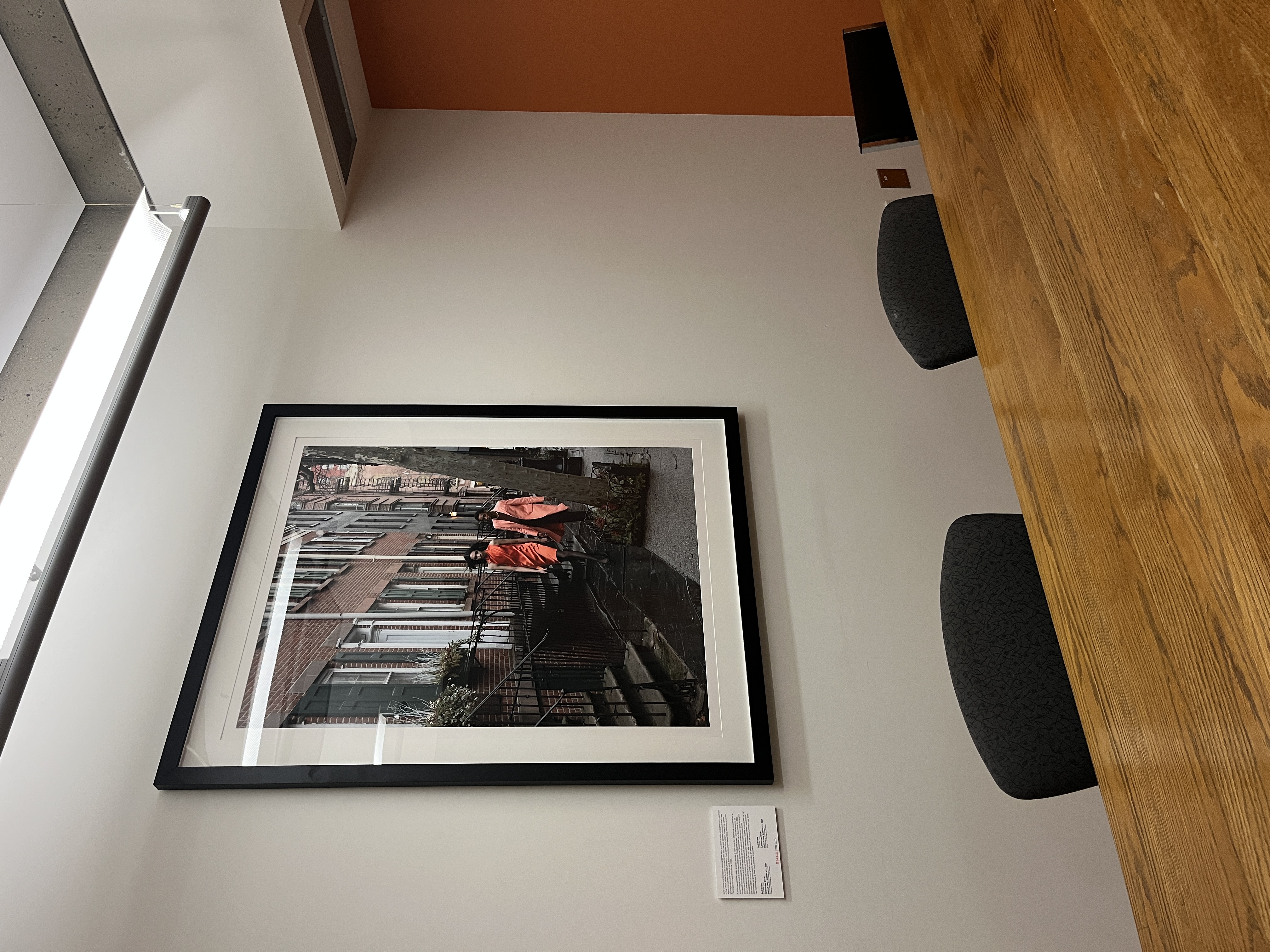A visit to the 3rd floor of New Chancellor Day Hall will transport you to New York City. Funded by a generous group of alumni from the Faculty of Law, this curated space celebrates the city where they make their home.
New York City is an enigmatic place and like any major metropolis, it has many different facets to pull inspiration from. In collaboration with the Faculty of Law, the Visual Arts Collection channelled the city’s diversity to guide the curation of the artworks in this space.
We decided to use photographs as the primary works in the space because from a conceptual point of view, great photography invites us to think about how we see. When trying to convey such a dynamic place like New York City – which means so much to so many – photographic artworks encourage versatility of viewpoints and diversity of ideas.
Melvin Charney

Mohawk Ironworkers: David Grant Noble & Melissa Cacciola

Kahnawake Mohawks began working the high steel in 1886 when the Canadian Pacific Railroad built the St. Laurent Railway Bridge, which terminated on the Kahnawake Reserve. The First Nations ironworkers quickly excelled at this specialized and dangerous work. Ironworking soon became an essential part of the community’s economy and pride.
In 1970, photographer David Grant Noble began a series of photographs of Mohawks working in New York City. The workers taught Noble to traverse their workplace above the streets. Years later, Noble re-connected with the ironworkers and their families to identify each worker by name.
Paired with Noble’s photographs is a contemporary tintype portrait of an ironworker from 2012. Artist Melissa Cacciola photographed Joe ‘Flo’ as part of her series, Skywalkers: The Legacy of the Mohawk Ironworker at the World Trade Center. Using this historic process (a photographic positive on a metal plate invented during the 1850s), Cacciola created individual portraits of Mohawk ironworkers who volunteered in 9/11 rescues and were an integral to the construction of the One World Trade towers.
Together these photographs are a tribute to how great cities are built and re-built – by people.
Sidewalks: Jules Allen & George Zimbel

Paired, these photographs show New York City’s sidewalks as a stage. These concrete pathways are transient, liminal sites of social performance.
American artist and educator Jules Allen honed his photographic style on the streets of New York City. This print belongs to Allen’s Hat and HatNots series, in which he documented Black New Yorkers wearing hats. Allen demonstrates that the hat, more than simply an accessory, is laden with connotations of social mobility.
Canadian-American artist George Zimbel similarly developed his keen photographic eye in New York. He famously photographed Marilyn Monroe in New York surrounded by paparazzi as she stood over a street grate in a white dress. The grain of this photograph gives it a cinematic quality. We might wonder what will happen next to this young boy as he runs full tilt toward the towering Empire State Building.
Sunil Gupta

Sunil Gupta is a Canadian photographer who was born in India and grew up in Montreal in the 1970s. While he was a student in the city, he was actively involved in the Queer Rights movement at McGill University, then called Gay McGill. Some of his earliest photographs were taken in and around campus for a series titled Friends and Lovers: Coming Out in Montreal in the 1970s.
In the late 1970s, Gupta moved to New York City. He focused on the West Village, shooting candid portraits on Christopher Street, the site of the Stonewall riots just a few decades earlier, which became the epicenter of Gay Pride. As an homage to his earlier work ‘cruising’ on Christopher Street, Gupta took to this same neighborhood in 2020 for a Helmut Lang fashion photo shoot. His dynamic photographic print of two androgynous models walking not only bridges the gap between fashion and art; it also represents the photographer’s experiences advocating and documenting gay rights – both in New York and Montreal.
John Shaw

The accompanying print by Shaw depicts the very human experience of two people sitting on a New York City park bench. The artist masterfully depicts an entire conversation and the setting, complete with pigeons.